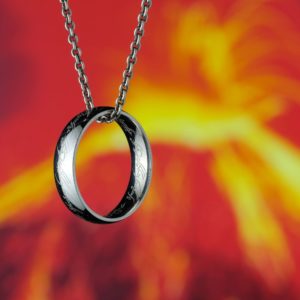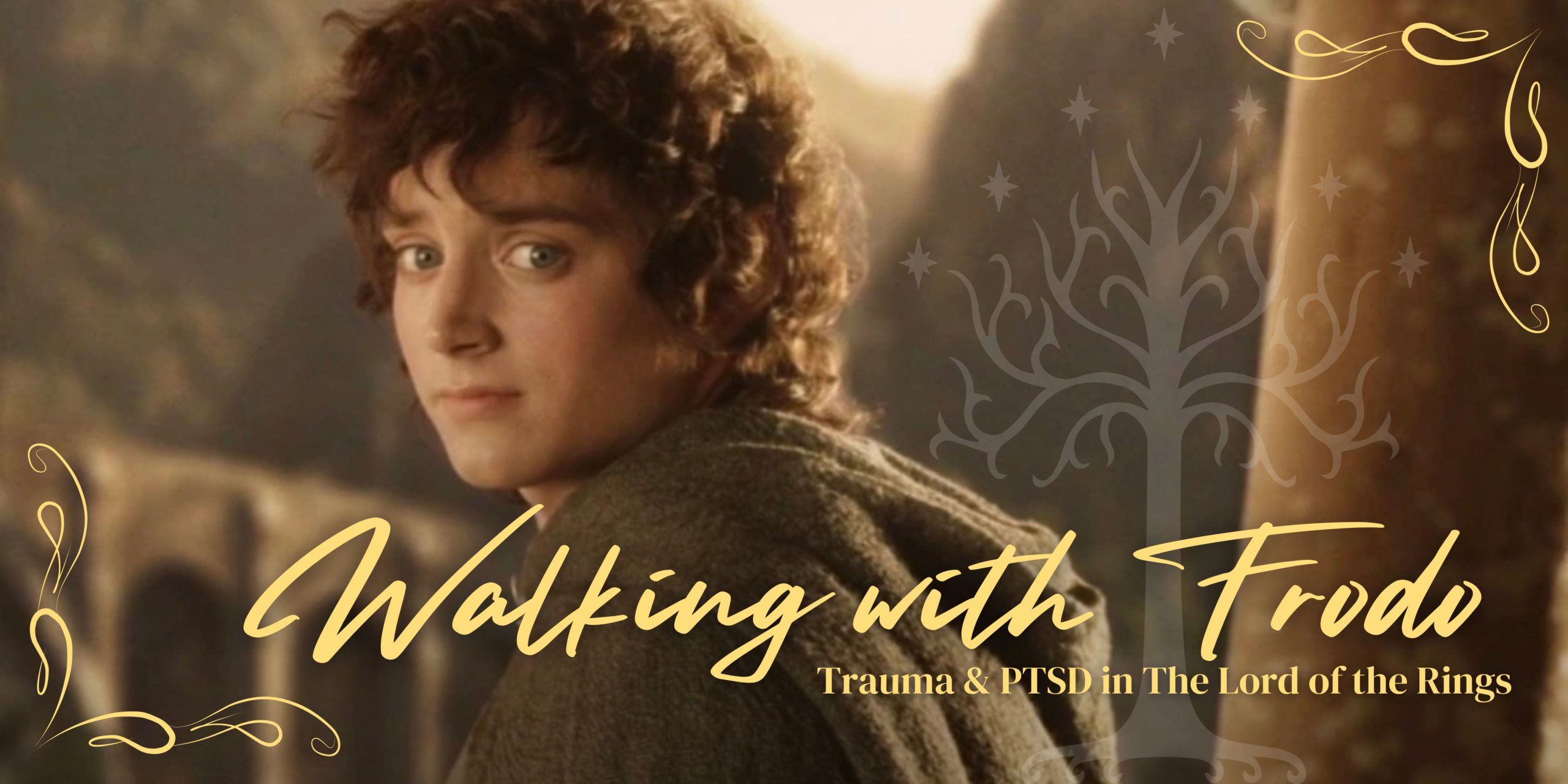“There is no real going back. Though I may come to the Shire, it will not seem the same; for I shall not be the same. I am wounded with knife, sting, and tooth, and a long burden. Where shall I find rest?”
– Frodo Baggins, The Lord of the Rings
Who is your favorite character in Lord of the Rings? And, perhaps along those same lines, which character most resembles who you are?
The Lord of the Rings has long been my favorite book and movie series. I’ve had various favorite characters over the years for multiple reasons. However, Frodo Baggins was a tough character for me to connect with until recently. Sitting down to re-watch the trilogy, I suddenly realized I understood Frodo far better than ever before. We have something in common. We walked a journey unfathomable in its challenges and heartbreak. We survived with God’s grace and the help of the amazing people in our respective “fellowships.” And both of us were burdened with PTSD and trauma as a result of the journey.
I Wish the Ring Had Never Come to Me
Frodo: “I wish the Ring had never come to me. I wish none of this had happened.”
Gandalf: “So do all who live to see such times, but that is not for them to decide. All we have to decide is what to do with the time that is given to us.”
No one wishes difficult circumstances to come into their lives, and we especially don’t want to experience trauma. We cannot choose whether or not those moments will happen, but we can decide how we move forward from them.
Frodo Baggins experienced so much physical and emotional trauma during the Lord of the Rings. He was exhausted, grieved when friends perished, felt tremendous loss, faced betrayal, and had to flee from those who wanted to kill him. He experienced physical injuries that would stay with him for the rest of his life. His burden was so difficult that he said, “No, Sam. I can’t recall the taste of food… nor the sound of water… nor the touch of grass.”
 [Spoiler Alert – but if you haven’t read the books or watched the movies by now, my heavens, get to it!] When Frodo reached Mount Doom and stood over the lava lake, we all cheered our hero on, expecting him to throw the ring into the lava. It’s such a simple action. A tip of the hand, and in the ring goes. However, Frodo broke. The mental and physical burden of carrying it made him falter and refuse to destroy it. However, he was not alone, and the task was accomplished in the most unexpected way.
[Spoiler Alert – but if you haven’t read the books or watched the movies by now, my heavens, get to it!] When Frodo reached Mount Doom and stood over the lava lake, we all cheered our hero on, expecting him to throw the ring into the lava. It’s such a simple action. A tip of the hand, and in the ring goes. However, Frodo broke. The mental and physical burden of carrying it made him falter and refuse to destroy it. However, he was not alone, and the task was accomplished in the most unexpected way.
And while we are heartbroken that our hero couldn’t accomplish the task he set out to do and that the trauma broke him, I believe that Tolkien wrote it that way to show how difficult such a burden can be. He showcases that none of us are immune to its impacts and that even the strongest and most tenderhearted can be broken by it.
Certainly, Frodo never wanted his life’s adventure to turn out that way. He was entirely justified in wishing that the One Ring had never come to him. However, he chose to march forward on the journey and do his best to complete his task. He endured in the most dire of circumstances. And, even after the Ring’s destruction, he tried his best to resume the life he had once had.
Sailing to The Gray Havens
“There are some things that time cannot mend… some hurts that go too deep… that have taken hold.”
– Frodo Baggins
We are often led to believe that healing begins once a situation is over and the trauma has passed. How often do we think that we should be fine at the flip of a switch? However, that’s not how healing works. Healing is often more difficult than surviving the traumatic incident itself and can last for years.
While traumatic incidents have less impact on some people, they can cause PTSD in others. There is no rhyme or reason as to why some people experience it, and others don’t. In The Lord of the Rings, Samwise is able to carry on and start a family when he returns to the Shire, even though he has walked nearly the same journey as Frodo. However, Frodo struggles with nightmares and the recurring pain of the stab wound from Weathertop.
Healing for Frodo never comes in this life and is only achieved when he sails to the Gray Havens with the elves. In our lives, we have to recognize that healing is a difficult journey in itself, and sometimes, it may not arrive until the day we step into Jesus’ arms.
Tolkien and Trauma
J.R.R. Tolkien wrote, “Frodo is a study of a hobbit broken by a burden of fear and horror — broken down, and in the end made into something quite different.” Tolkien wrote a beautiful case study of the impact of trauma on a person and of the human will to endure through the most trying of circumstances.
It is believed that Tolkien’s own experiences fighting in World War I inspired parts of The Lord of the Rings. For instance, the Dead Marshes in the story strongly resembles the setting of the Battle of Somme in France. Tolkien would have seen the bodies of the dead and wounded lying in the marshes surrounding Somme. Perhaps he felt as if he were drowning with the trauma surrounding him— a scene he depicted when Frodo steps off the path and nearly drowns in the marsh.
Trauma and PTSD were not widely accepted until the 1970s after the war in Vietnam. Until then, traumatic responses from the World Wars were termed “shell shock.” Without treatment or help, PTSD could be devastating for these soldiers. Many writers, including A.A. Milne, author of Winnie the Pooh, processed their trauma through writing. While Tolkien never publicly discussed the war’s effects on him, he created compelling characters who dealt with trauma and its impact in this beautiful story.
What Are We Holding On To?
Frodo: “What are we holding on to, Sam?”
Samwise: “That there’s some good in this world, Mr. Frodo. And it’s worth fighting for.”
I know there are days, even now, when I wonder why I’m holding on and what I’m holding on to. There are days that PTSD tells me I don’t want to hurt anymore and that this isn’t worth it. But those are all lies. It is worth holding on to hope and fighting for good to come out of it. One of my greatest privileges and joys is knowing that I can take the trauma—what was meant for evil—and turn it into good to help others walking on that same journey.
What are you holding on to? What is your “why” for keeping going day after day if you’ve experienced something traumatic?
The Fellowship
“You left out one of the chief characters: Samwise the Brave. I want to hear more about Sam. Frodo wouldn’t have got far without Sam, would he?”
-Frodo Baggins, The Two Towers
Of course, we couldn’t tell the story of The Lord of the Rings without mentioning the fellowship of people surrounding Frodo.
Frodo initially intended to start on his journey alone. However, he wouldn’t have made it to Mordor without the support and love of others who surrounded him. Whether it was the Fellowship formed in Rivendell and their continued actions long after they were separated or Samwise, who accompanied him the entire journey, Frodo relied on them to keep him going.
In Frodo’s journey, as in our own lives, we each need the support of loved ones and mentors who help us carry on when we feel like hope is lost. We need friends to encourage us and show us that there is still hope.
In my own journey, I would have been lost without Jesus guiding and protecting me, the counsel and wisdom of pastors, the support of courageous friends, and the fearless courage of my parents, who helped me escape a dangerous situation. I could never have done it on my own. And even now that the immediate danger has passed, as I walk the long road that is healing, I know I’m not alone. The fellowship of friends and loved ones with me helps keep me going and growing.
Who is the fellowship that walks alongside you on your journey? Let me encourage you to stop and think of each of them today and reach out and thank them for being there. What a joy to know that we don’t walk the trails of this life alone.
© 2023 Lainey La Shay


Beautiful. Thank you.
This helped me with a school English project thank you so much.
You’re welcome! I’m so glad it was helpful!